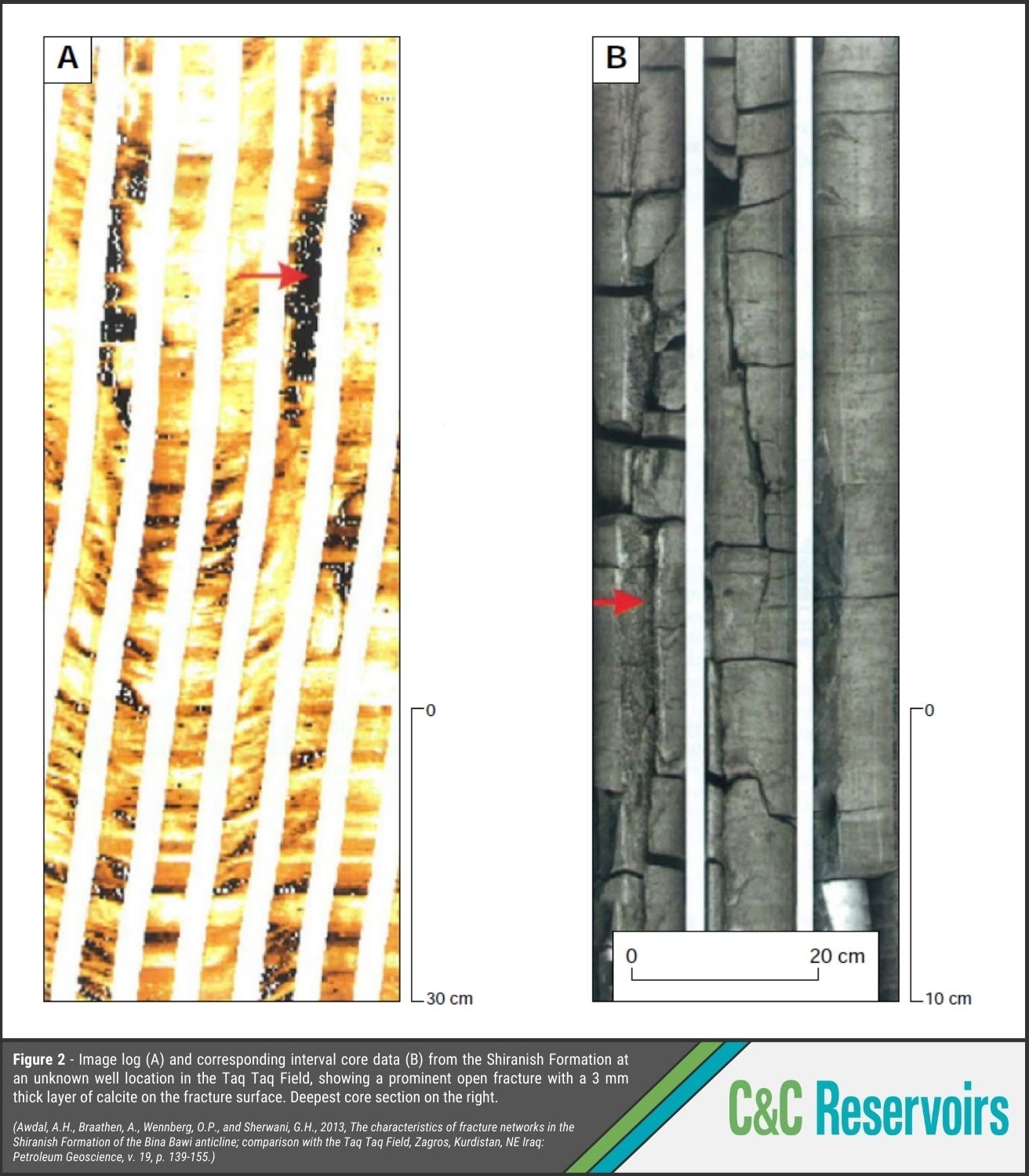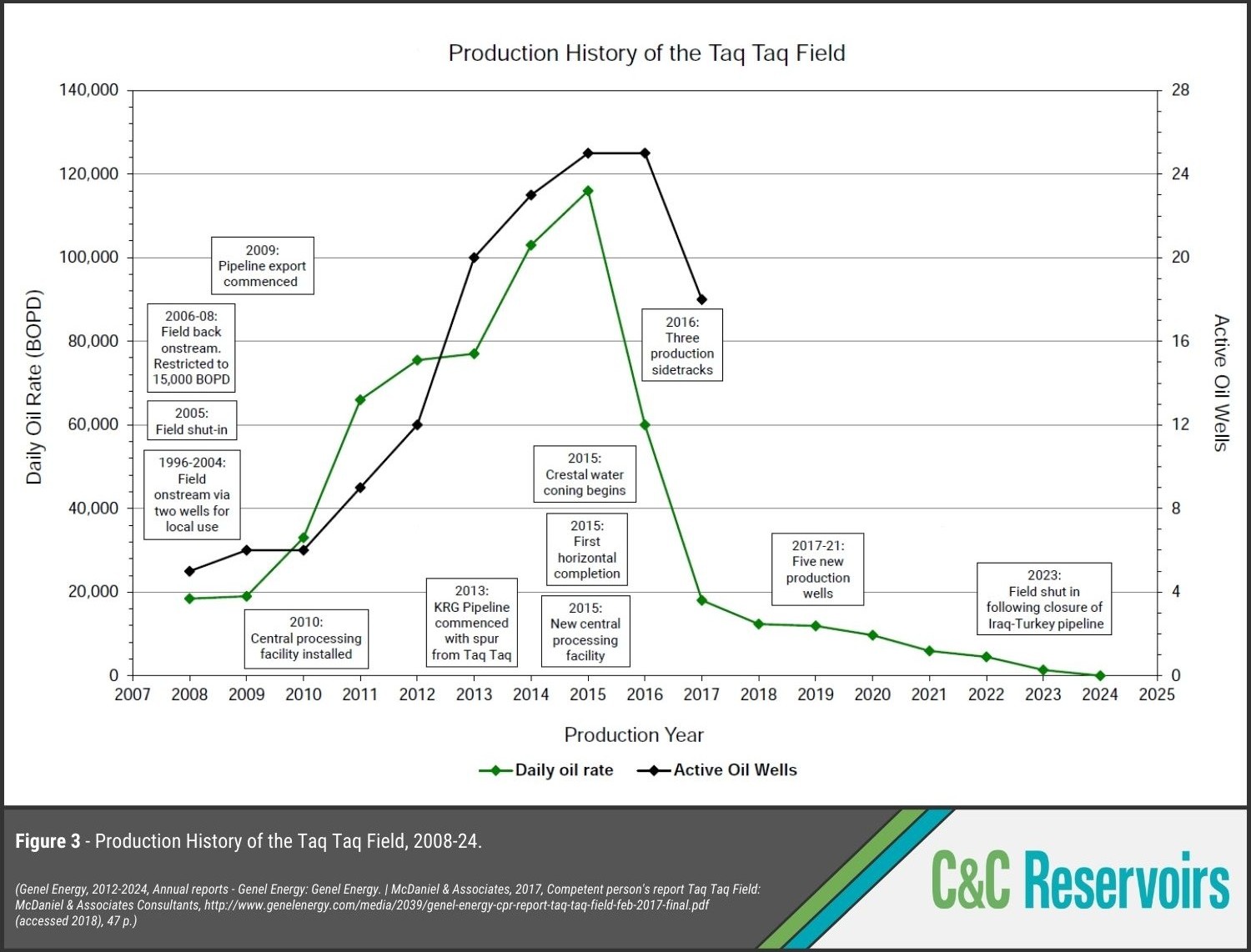The Taq Taq Field
Analogue Spotlight
Discover the Taq Taq field in Iraq. A fascinating analogue on the impact that extensive fracture networks can have on oil production; both positive and negative.
Although first discovered in 1958, it wasn’t until 2008 that full-scale production occurred. At the heart of Taq Taq’s success is the Cretaceous Shiranish Formation – a tight limestone reservoir with an extensive network of fractures that significantly enhances oil flows (Figs. 1 and 2). These fractures have enabled an impressive recovery factor of 75%, with an EUR of 139 MMBO entirely contained within the fracture network. However, despite its impressive recovery rate, and relatively short field-lifetime thus far, Taq Taq has experienced some significant challenges to production along the way.
By 2015, as the field’s production surged to 116,000 BOPD, severe water coning occurred at the crest of the reservoir. The very fracture corridors that had enabled such high levels of production had now become a pathway for water infiltration. This had extreme consequences for the production rate, which plummeted to 18,050 BOPD in 2017, as water-cut rose to 41% (Fig. 3).
This escalating water production triggered two significant downgrades of the field EUR in 2017 – the first from 683 MMBO to 356 MMBO, and the second to 267 MMBO. In response, horizontal wells and sidetracks were drilled in an effort to curb water influx and boost oil recovery. However, the long-term effectiveness of these remains uncertain, and interruptions to production due to closure of the Iraq-Turkey pipeline in 2023 has further impacted the performance of the field (Fig. 3).
The history of the Taq Taq field underscores the importance of understanding fracture behavior over time and adapting reservoir management strategies accordingly. Taq Taq stands as a compelling analogue of both the opportunities and challenges presented by highly fractured reservoirs, offering valuable lessons for future developments in similar settings around the world.



